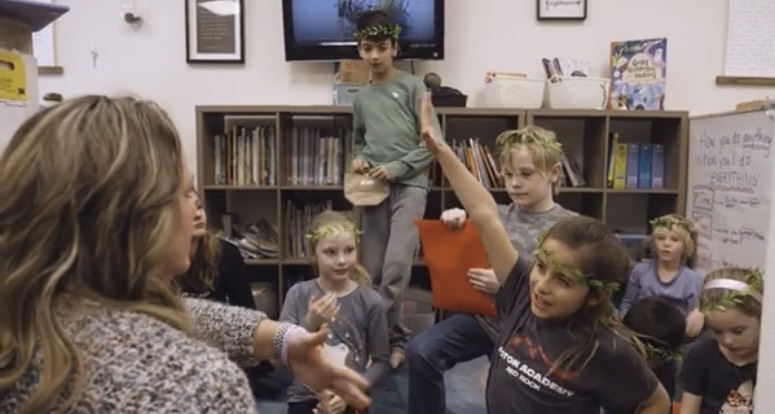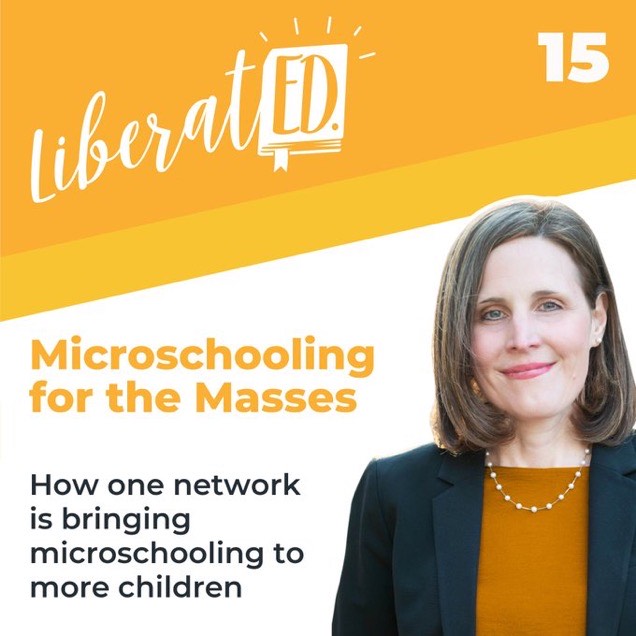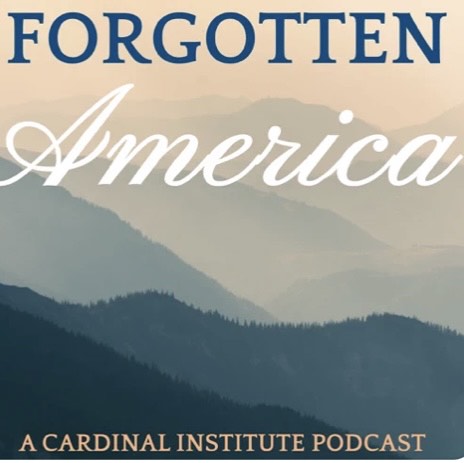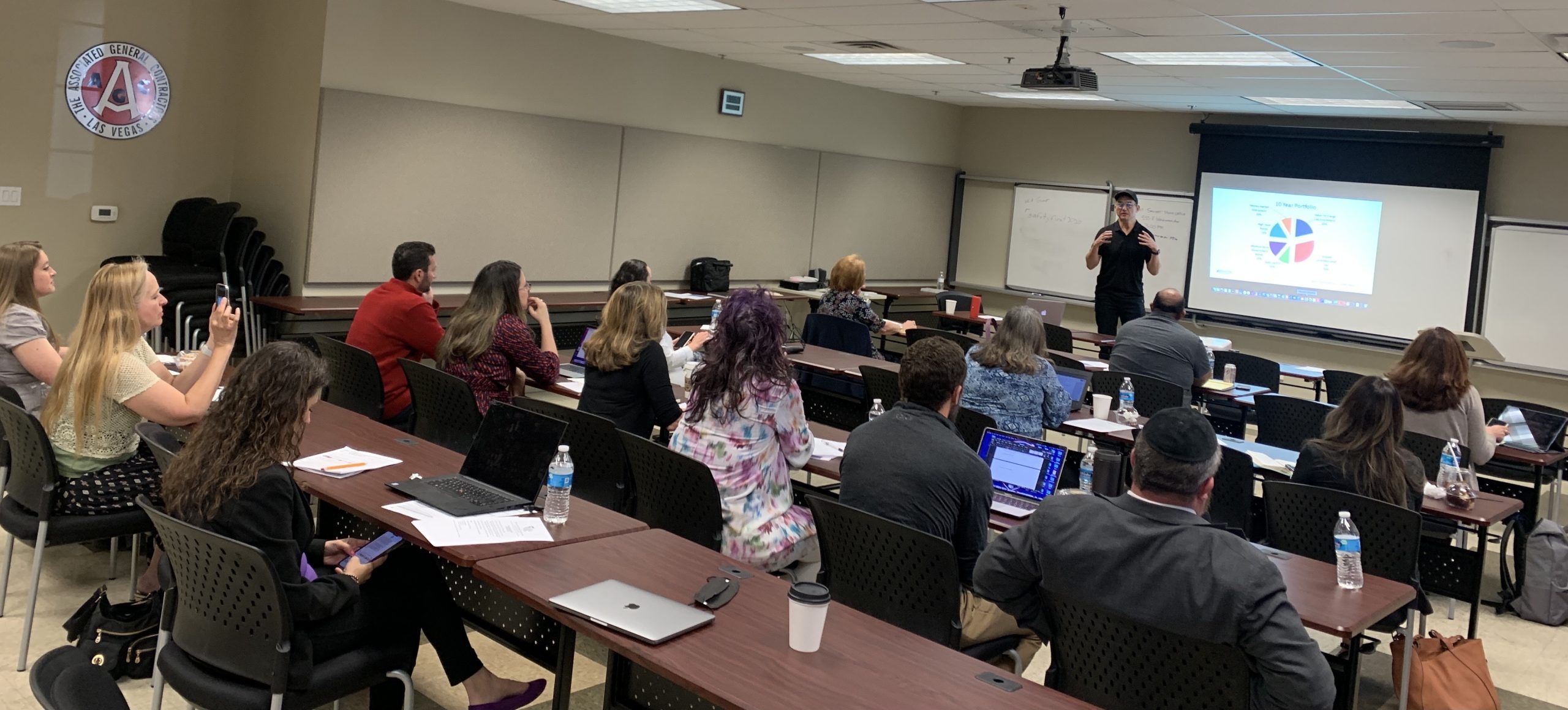Federal Child Care Tax Credit Should Support Microschooling
How Employer-Provided Child Care Tax Credits Could Expand Microschools
Originally Published by the Foundation for Research on Equal Opportunity
Since 2001, federal law has encouraged employers to provide child care services through the Employer-Provided Child Care Credit. The government offers a credit worth up to $150,000 for certain child care expenditures. Eighteen states offer similar tax benefits to encourage employer-provided child care.
Across the United States, many parents are choosing to establish microschools or “learning pods” to provide educational instruction to children. These learning environments can be in settings similar to the traditional one-room schoolhouse and are convening in libraries, workplaces, houses of worship and living rooms around the country. Many microschools started during the pandemic to provide instruction and care for children while schools were closed.
Encouraging employers to offer child care microschools for their employees’ children could address policymakers’ longstanding goals of expanding access to high-quality child care while meeting parents’ increasing demands for new schooling options for their children. While federal and state employer-provided child care tax credits may allow this expense under existing tax rules, policymakers should clarify or update employer-provided child care tax credits to expand microschools.
Background
The COVID-19 pandemic changed the way that Americans think about K-12 education. Prolonged school closures and other disruptions led parents to reconsider the value provided by traditional K-12 public schools, including its implicit role as a valuable child care service, and the risks of trusting those decisions to elected officials and school district leaders.
In fact, families around the nation are fundamentally reconsidering their relationships with the institutions they have historically relied upon to meet their educational needs. A recent survey analysis by Michael McShane and Paul DiPerna for the Center on Reinventing Public Education indicates that between two and three million or more American elementary and secondary students nationwide are attending microschools (or “learning pods”) “as a full-bore replacement for [their] typical typical environments.”
What this survey shows is that a phenomenon born during pandemic conditions—largely in response to systemic failures by public school districts to provide families with acceptable education solutions—is demonstrating resilience to thrive after the conditions subsided.
For most families, choosing microschooling meant withdrawing from district-operated schools and public charter schools to file as homeschoolers under the rules of their state. While microschools can be organized under any governance model, the stringent rules under which schools of choice must operate in many jurisdictions makes the comparative flexibility of a homeschool co-op arrangement quite attractive for microschool founders.
Broadly, these alternative learning environments must include learners from multiple families to be considered microschools, but few other rules apply. In many states, the small, intimate learning environments have opportunities to run as private, public charter, or even as “schools within schools” operated by public school districts.
While formal definitions for this emergent education sector are scarce and often not relevant, the West Virginia legislature recently codified this definition of microschools in statute:
“Microschool means a school initiated by one or more teachers or an entity created to operate a school that charges tuition for the students who enroll and is an alternative to enrolling in a public school, private school, homeschool, or learning pod.”
21st century one-room schoolhouses
Microschools themselves are not exactly new as an instructional model. Often, there are clear resemblances to the one-room schoolhouses across America’s mid-19th century prairies, now updated with technology and contemporary pedagogies. Many practitioners feel this movement’s compelling educational potential resides in the ability of its small, nimble learning environments to create and adapt their approaches to the specific needs of particular learners.
With this burgeoning American microschool movement very much in an early adopters phase, most iterations can be described as “independent” microschools, sometimes sharing curricular content or even formal affiliations such as Acton Academies, Wildflower Schools, or Prenda.
A newer model, “Partnership Microschooling,” appeals to serve more learners with scalability when technical partners, like education nonprofits, are responsible for teaching and learning aspects as they pair with host partners, such as municipal governments, employers, houses of worship or professional associations. Functions of host partners ideally leverage available assets such as facilities space, technology, support staffing and meals these microschools can use to keep costs down, and provide the financial resources as an investment to support their families.
The growth of microschooling across the United States coincides with available state funds for families to participate in alternative educational programs. For example, West Virginia created a Hope Scholarship Program to allow families to receive $4,300 in funding through an education savings account (ESA) that can be used to “tailor an individualized learning experience that works best for them.” Funds can be used for tuition and fees, tutoring, and other costs—including microschools—which the state defined in statute for the first time.
Eight states have similar ESA programs, while other states like Idaho and Nevada have made other public funds available to use for microschooling. Nevada’s legislature created a fund called Transforming Opportunities for Toddlers and Students (TOTS) that provides $5,000 for families of special needs children for broadly defined educational purposes. Demand-side reforms like these are supporting the growth of microschooling options nationally. Idaho implemented a new $50 million “Empowering Parents” program that makes public funds available to families to apply toward reversing learning loss.
The opportunity to provide incentives for organizations to operate microschools
Another way to increase the high-quality education choices for parents is to provide incentives for organizations to establish microschools or partnership microschools. This would increase the supply and thus lower the cost of such options. For example, policymakers could allow employers to use federal or state tax credits for employer-provided child care to establish microschools for children.
The Federal Employer-Provided Child Care Credit was created to encourage employers to expand the availability of affordable child care for their employees. Similar state tax benefits have been created to accomplish the same objective.
Extending these tax benefits would expand learning opportunities by creating more education service providers that could give more children high-quality educations, while also providing child care as a valuable benefit for employees.
Background on federal and state employer-provided child care tax credits
Since 2001, the federal tax code has provided a tax credit for employers to provide certain child care services to their employees. This tax benefit was made permanent by the American Taxpayer Relief Act of 2012.
In a February 2022 report, the nonpartisan Government Accountability Office (GAO) summarized how the credit works:
“The tax credit is equal to the sum of 25 percent of qualified child care expenditures, and 10 percent of qualified child care resource and referral service expenditures, with a total taxable year limit of $150,000. Employers may claim the credit if they incur qualified expenses (1) to acquire, construct, rehabilitate, or expand and operate a qualified child care facility of the taxpayer; (2) under a contract with a qualified child care facility to provide child care services to employees of the taxpayer; or (3) under a contract to provide resource and referral services to an employee of the taxpayer.”
In other words, employers are eligible to receive a federal credit worth up to $150,000 for costs spent on providing child care services if they follow certain federal rules.
Specifically, federal law clarifies what kinds of expenditure are eligible for the employer tax credit. According to the U.S. Code, a “qualified child care facility” means: “(i) the principal use of which is to provide child care assistance, and (ii) which meets the requirements of all applicable laws and regulations of the State or local government in which it is located, including the licensing of the facility as a child care facility.”
Based on this definition, it is unclear whether a microschool that provided child care in addition to educational instruction would qualify under federal law, as well as the referenced state and local government laws and regulations for child care facility licensing.
However, the statutory language also states that:
“a facility shall not be treated as a qualified child care facility with respect to a taxpayer unless, (i)enrollment in the facility is open to employees of the taxpayer during the taxable year, (ii)if the facility is the principal trade or business of the taxpayer, at least 30 percent of the enrollees of such facility are dependents of employees of the taxpayer.”
During the most stressful periods when public schools were shut down during COVID-19, families of school-aged children across America struggled for reliable child care solutions as they scrambled to juggle work and family responsibilities. Facing a strong likelihood that some such interruptions can be expected to continue into our future school experiences, many employers would find it both extremely welcome and beneficial to their families to be able to provide child care to their school-aged children at their place of work and aligned with workplace schedules. This tax credit would be of strong value to such employers seeking to do so for their workforces.
According to federal age requirements for the child and dependent care credit—which allows taxpayers to take a credit worth up to $8,000 for the care of two people—providing care for a child under age of 13 should qualify for a child care tax benefit. That credit includes a “dependent who is under the age of 13 when the care is provided” in the definition of “qualifying persons,” according to the Internal Revenue Service.
Some states provide similar tax credits for employer-provided child care. According to the Committee for Economic Development, 18 states currently have employer-provided child care tax credits. For example, the state of Georgia provides a generous tax credit for employer provided child care, offering a 75 percent credit for certain child care costs. In Virginia, taxpayers are eligible for a 25 percent state tax credit worth up to $25,000 for qualifying child care expenditures. In 2021, New York expanded its existing state tax credit for employer-provided child care, according to the governor’s office, “doubling the current credit percentages to 50 percent of qualified child care expenditures and 20 percent of qualified child care resource and referral expenditures while increasing the per taxpayer cap from $150,000 to $500,000.”
Why employer-provided tax credits should be expanded to support child care microschools
Since policymakers intended to expand Americans’ high-quality child care options, it would be reasonable for the Department of Treasury as well as state and local governments to recognize microschools that provide child care as an eligible expense. During the pandemic, many parents realized that public schools provide both instruction and child care services. Prolonged public school closures forced parents to make alternative child care arrangements, miss work, or leave the workforce altogether during remote schooling.
Clarifying that education or instructional services are eligible for the credit could be one way to encourage more employers to use the credit and provide high-quality child care to their employees in the future. For example, the GAO reported that that the credit has not been widely used:
“In 2016, the most recent complete year available, the Internal Revenue Service estimated 169 to 278 corporate income tax returns claimed an aggregate estimated $15.7 to $18.8 million in Employer-Provided Child Care credits. In 2018, the most recent year available, IRS estimated corporate returns reported $144.7 to $154.8 million in qualified child care facility expenses, and fewer child care resource and referral expenses.”
The GAO also highlighted possible reasons why the tax credit was not used, including lack of awareness of the credit, the costs and complexities of building and operating child care facilities, and that the tax benefit may not be large enough. The Bipartisan Policy Center found that small businesses face challenges utilizing the Employer-Provided Child Care Credit while larger businesses have been better able to take advantage of it to provide child care options for their employees.
A 2021 presentation published by the Federal Reserve Bank of Philadelphia highlighted a compelling business case for employer-provided child care. Specifically, the presentation showed that access to child care affects workforce participation—particularly among women—and that employers underestimate the importance of child care to their employees.
While policymakers have often viewed child care and K-12 schooling as different objectives, the COVID-19 pandemic showed that they overlap considerably. As a result, researchers have found that a large segment of women left the workforce to care for their children when school or child care options were closed. Encouraging employers to provide child care services that include educational instruction, such as by establishing child care microschools, may help parents avoid choosing between working and taking care of their children during prolonged school closures or other disruptions. .
Why encouraging employers to establish microschools would promote equality of opportunity
A standout example of microschooling’s powerful potential is the Southern Nevada Urban Micro Academy, the nation’s first public-private partnership microschool between the City of North Las Vegas and nonprofit Nevada Action for School Options.
In July 2020, forward-thinking city leaders recognized that the Clark County School District was not going to open to serve its residents that school year. They contracted with the local education nonprofit as its technical partner to build and operate microschools in the city’s recreation centers and one library. These institutions would operate in-person every day, ultimately at no cost to city residents and working families.
City leaders required that the model be designed to counter pandemic learning loss. This requirement proved timely as the program’s onboarding assessment indicated three-fourths of children in the program were more than two grade levels behind in math and reading. An instruction program utilized world-class learning tools provided at no cost by national nonprofit curriculum providers Cadence Learning and Zearn and enhanced by a team of learning guides and interventionists. As Clark County struggled through the worst of the COVID pandemic, children received breakfast and lunch every day at the Micro Academy, prompting one city leaders to observe, it “beat being left at home alone with a jar of peanut butter.”
Children in the Clark County program thrived and the program has proven immensely popular with families. Children averaged more than two years of academic gains in reading and slightly less than that in math. The Center on Reinventing Public Education published a case study on the Southern Nevada Urban Micro Academy that provides additional details.
Since more affluent families are traditionally more likely to have the ability to choose their children’s school—particularly by paying housing costs in locations with residentially-assigned public schools—creating new schooling options by expanding the supply of microschools would benefit less-affluent families who are unsatisfied with their children’s schooling options. Leveraging employer-provided child care credits to encourage more employers to establish child care microschools would promote greater educational opportunity for those who need it most.
Recommendations
Expanding federal and state employer-provided child care tax credits to encourage employers to offer educational services like microschools will provide substantial child care benefits. Parents would have expanded options for child care and schooling for their children. Employers would be able to provide attractive benefits for their current and prospective employees who are parents.
Our review suggests that the federal Employer-Provided Child Care Tax Credit may allow employers to establish child care microschools. However, policymakers could take action to clarify that establishing microschools is an allowed expenditure under the credit and, if necessary, update federal and state laws to encourage employers to establish microschools.
The following are specific recommendations for policymakers:
- Congress should request clarification from the Department of Treasury regarding whether expenses to establish microschools to provide child care and education services is an allowable use under the current federal Employer-Provided Child Care Credit.
- State policymakers should similarly review existing state employer-provided child care credits to clarify whether microschools that provide child care services qualify.
- Congress should clarify that use of the tax credit to provide employer-provided child care, including microschools at parents’ place of work as current statute specifies, are permitted to include academic schooling options in accordance with state laws.
- If necessary, Congress should amend the federal Employer-Provided Child Care Credit to allow education expenses to be an allowed use.
- States should similarly update state employer-provided child care credit rules to allow microschools.
Conclusion
The COVID-19 pandemic has created unprecedented challenges in K-12 education and the child care sector. Widespread school closures and other disruptions have resulted in dramatic learning losses that threaten the futures of a generation of American children. Emerging data show that the achievement gap between rich and poor children has widened. Experts have warned that learning losses will have long-term consequences for affected children, including lower lifetime earnings and reduced life expectancy. Moreover, prolonged school closures in 2020 and 2021 disrupted millions of American families’ child care arrangements, often forcing parents—particularly mothers—to choose between working and caring for their children.
But the pandemic has also increased interest in new instructional models like microschools that are responsive to American parents and children’s needs. Allowing employers to establish microschools or partnership microschools to benefit their employees’ children would improve child care and schooling options for millions of American families and promote greater educational opportunity.
###
Dan Lips is a senior fellow with the Foundation for Research on Equal Opportunity. Don Soifer is President of Nevada Action for School Options.







 ssive delays and uncertainties receiving the expressly allocated shares of federal funding targeted to nonpublic school students.
ssive delays and uncertainties receiving the expressly allocated shares of federal funding targeted to nonpublic school students.